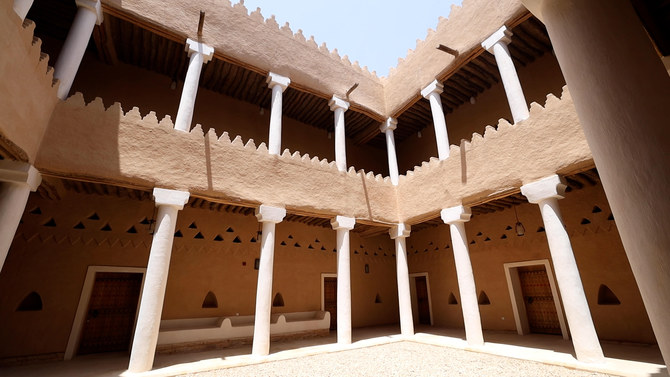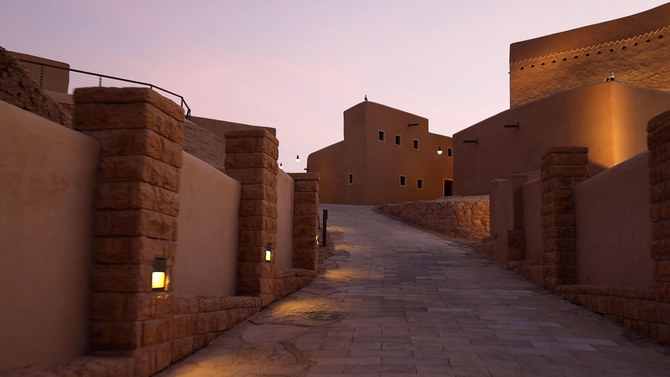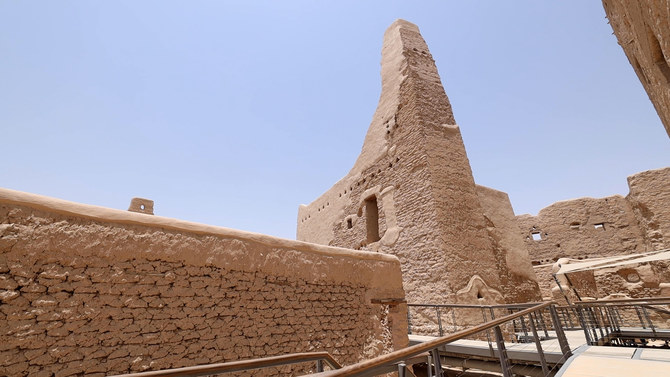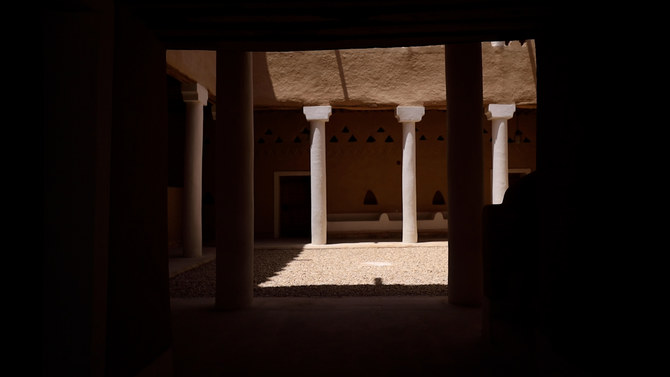RIYADH: The gated district of At-Turaif, northwest of Riyadh, is one of the Kingdom’s most-significant historical treasures.
Within the walls of At-Turaif’s Salwa Palace, discussions were held that led to the establishment of the First Saudi State in 1744 CE. The palace was built for Mohammed ibn Saud, the first ruler of the First Saudi State, although the final phase of this 10,000-square-meter complex was not completed until 1766, the year after his death.
The palace is a prime example of Najdi architecture, displaying delicately carved crenellations in the roofing of its buildings, which enabled guards to carry out surveillance of the area.
Close to Salwa Palace are two structures that, although not as famous, are worth visiting: the Museum of Commerce and Finance and the Sibalat Modhi.
The museum contains coins, jewelry, scales and other finance-related artifacts from the time of the First Saudi State, and is a reminder of the prosperity that was achieved during the early years of the Kingdom.
The Sibalat Modhi is a community building named after Modhi Bint Sultan Ibn Abi Wahtan, mother of Imam Abdulaziz ibn Mohammed ibn Saud (the second ruler of the First Saudi State). Located on what used to be the main road, the two-story structure contained a guesthouse for merchants, students, and the needy.
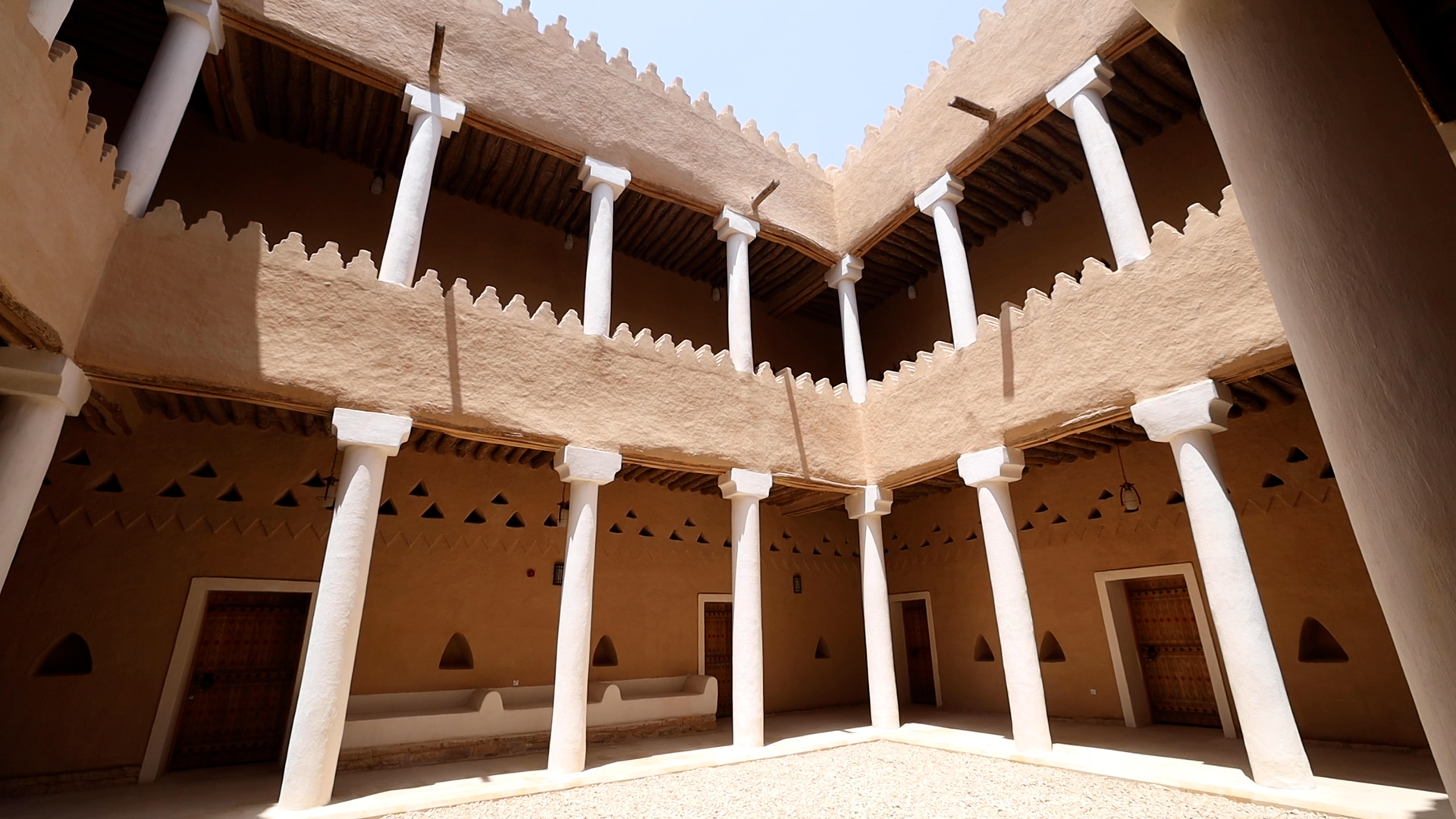
Saad ibn Saud Palace is one of the prominent features of At-Turaif district. Located in the northern region of the district, it was home to Prince Saad son of Imam Saud. (Abdullah AlJabr)
To the north of Salwa Palace is the Imam Mohammed ibn Saud Mosque — also known as the Grand Mosque of At-Turaif. The mosque would draw a huge crowd for Friday prayer, spilling over into the palace’s own mosque. So Imam Saud ibn Abdulaziz built a bridge connecting the two. The mosque, which overlooks Wadi Hanifah, also housed a religious school.
The next stop on the At-Turaif tour is the Diriyah Museum, which traces the Kingdom’s timeline from as far back as 400 CE — the time of the Banu Hanifah tribe’s migration — through the ensuing expansion of territory and trade, and ending with the Al-Saud royal family tree.
Besides a digital gallery of historical images of the First and Second Saudi States, the museum also contains replica documents, coins and clothing from those times, including the elaborate outfit worn by Imam Abdullah ibn Saud, the last ruler of the First Saudi State, and a replica of Al Ajrab Sword, a weapon owned by the founder of the Second Saudi State, Imam Turki ibn Abdullah. The sword is named after the rust on the edges of the blade.

Pictured is one of the many pathways designed to highlight the traditional Najdi architecture in At-Turaif district. (Abdullah AlJabr)
Right next to the Diriyah Museum is the Arabian Horse Museum, which also houses many artifacts that date back to the First and Second Saudi States and highlights the central role that horses played in unifying the Kingdom, as they were used for trade, warfare, and diplomacy.
Exiting the museum into the center of At-Turaif, visitors will see the Imam Abdullah ibn Saud Palace, home to the final ruler of the First Saudi State. It was built during the reign of his father — Saud ibn Abdulaziz Al-Saud, who was known as “Saud the Great.”
Much of the palace was destroyed during the sacking of Diriyah by Ibrahim Pasha in 1818 CE, but from the thickness of the walls that remain, historians have estimated that the palace was once a grand multistory structure that dominated the town.

An Image taken of one of the narrow pathways of the 10,000 square meter Salwa Palace that contains 7 individual units. (Faisal AlDakheel)
The nearby Military Museum is home to artifacts from the battles that led to the unification of the country and the First Saudi State, and close by is the Prince Thunayan ibn Saud Palace.
Prince Thunayan was the brother of Mohammed ibn Saud, and this grandiose palace on the southwestern side of Diriyah provides the perfect view of the valley below from its elevated walls — which were constructed from stone rather than mud bricks. It is another fine example of Najdi architecture.
Close by stands the Museum of Traditional Architecture, dedicated to the construction styles of the area's many palaces and other buildings, and home to many tools and materials used in the original construction of At-Turaif.

An image taken at the entrance of Prince Saad ibn Saud Palace, showcasing the structure's unique design. (Abdullah AlJabr)
Beyond that museum is the Prince Omar ibn Saud Palace, also known as Maqsurat Omar (the Grand Palace) because of the intricacy and complexity of its design. The palace served as a defensive gate for At-Turaif and was the residence of Prince Omar, the son of Imam Saud Al-Kabir.
Between the Prince Omar and Prince Saad Palace is the newest addition to At-Turaif, the Lifestyle Museum, which includes replicas of the traditional Najdi-style homes in which non-royal residents of At-Turaif would have lived at the time of the First and Second Saudi States.
The palaces, pathways, and weathered walls of At-Turaif are all rich reminders of the story of the origin of Saudi Arabia.


